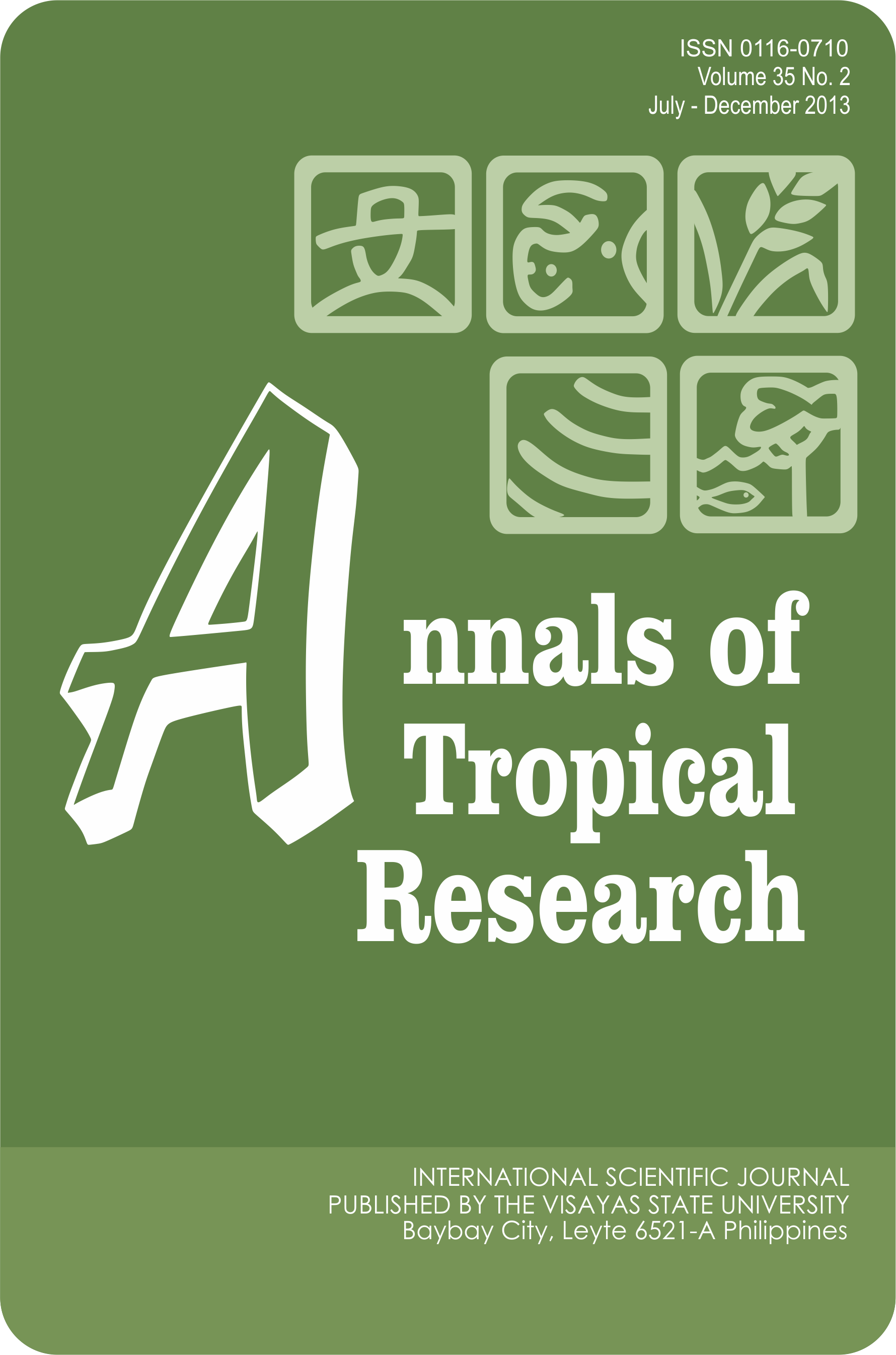Potential of Root Crops as Source of Electrical Energy
DOI:
https://doi.org/10.32945/atr3522.2013Keywords:
energy, galvanic cell, root crop, microbial fuel cell, biofilm, nata-de-coco membraneAbstract
Energy from edible and inedible root crop roots and tubers using galvanic cell and processing wastewaters through microbial fuel cell (MFC) technology was harnessed. Electrolyte in the roots and tubers was tapped for galvanic cell and the microorganisms from waste waters act as catalyst in MFC. In galvanic cell, the optimized responses of Badiang, cassava and sweetpotato were greatly affected by the surface area and distance between anode and cathode electrodes. An increase of nata-de-coco membrane size in MFC increased the voltage and current by 4.94 and 11.71 times, respectively. Increasing the width of anode also enhanced the responses. Different types of microorganisms were isolated from the biofilm anode of MFC. Their growth and proliferation which corresponded to the generation of electricity were also demonstrated in this study. A total of 54 bacterial isolates were collected from the biofilm at the anode of single-chamber MFC (SCMFC). The generated electricity observed using light emitting diodes (LED) showed potential both for galvanic and microbial fuel cell. The generated regression models are reliable tools in predicting desired outputs for future applications. These promising results demonstrated basic information on the electrical energy recovery from root crop waste waters and roots/tubers.
Downloads
Submitted
Published
How to Cite
Issue
Section
License

This work is licensed under a Creative Commons Attribution-NonCommercial-ShareAlike 4.0 International License.











